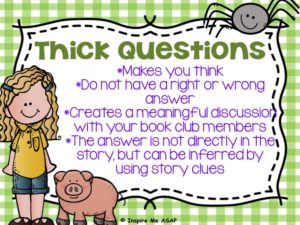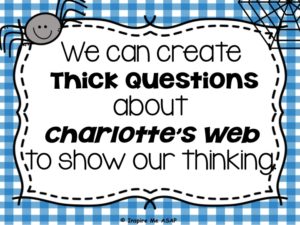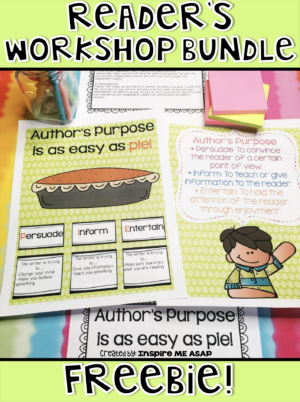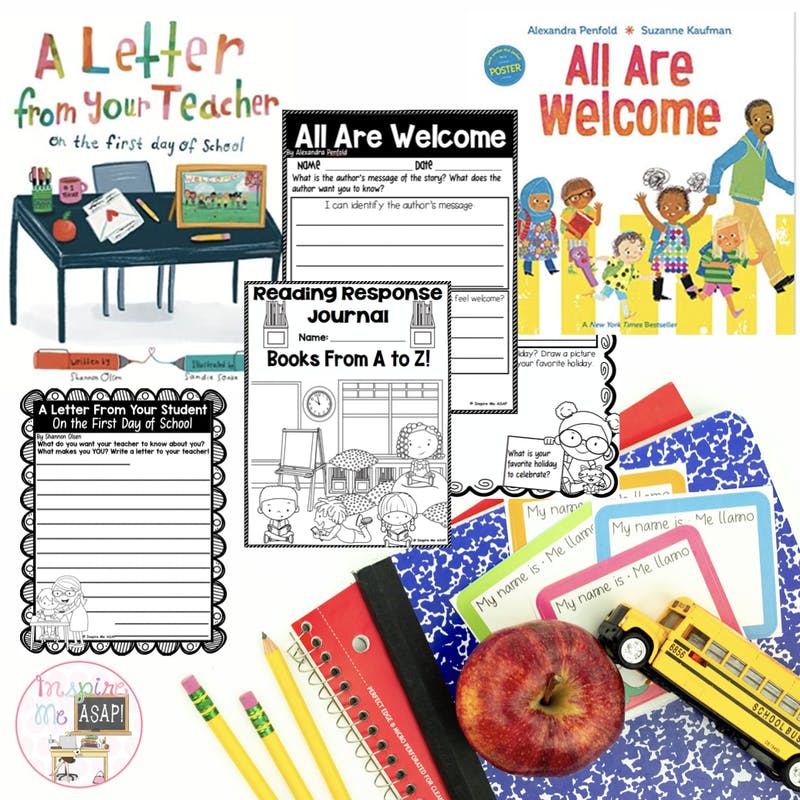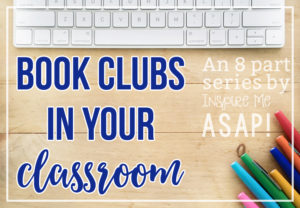
This is my sixth post in my eight post series about implementing book clubs into your classroom. Last week, I wrote about accountability with book clubs, which you can read more about HERE. Today, I am writing specifically about student-led conversations in book clubs.
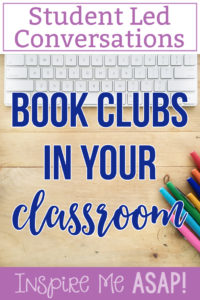
Let’s first identify some characteristics of student-led conversations with book clubs:
1. Students have authentic conversations and is not role-based
As I mentioned in my first blog post, I moved away from assigning roles, such as “Super summarizer” or “Cool Connector” because it limited my students’ discussions. You can read more about that HERE. Instead, students have genuine conversations about the characters, plot, and questions they have as they read. It is not a scripted conversation that the teacher instructs each group to talk about. The group members are held accountable to participate by sharing their thoughts and reflections about the text.
2. Students stick to one topic/discussion point and focus on it in great detail
Students learn to DIVE DEEP into their discussions. Instead of having a list of 5 or more different things to talk about, students learn to talk in-depth about one topic. Usually this topic stems from the whole class reading workshop mini-lesson. (I will address this further in the post.) For example, I might teach a mini-lesson about the theme of a chapter or a book. I would then encourage book clubs to meet and identity the theme in the book they are reading with their group members. The discussion is focused on that topic and students are reminded to use the text to support their thinking.
3. The focus is on the discussion, not actually reading the text
When I first implemented book clubs with my students this year I had many students perplexed with this characteristic of book clubs. As we identified characteristics and expectations of book clubs (read more about this HERE), the students learned that book clubs are a time to talk together, not read together. It was obvious that in the previous grade, their teacher had them read the book together and have that be the focus of the book club. As a result, I had to teach a couple mini-lessons about having RICH discussions about the book.
4. Group members ask and answer specific questions about the text
Common Core State Standards require that students ask and answer questions of a text, explicitly referring to the text as the basis for the answer.
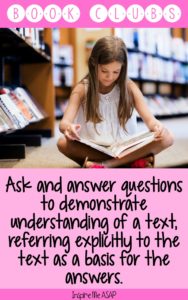
The students focus on asking and answering THICK questions about the text. THICK questions do not have a yes or no answer and can not be answered with just one word. Some examples include “What character traits do you think describe Opal’s personality?”
We used the following poster as an anchor chart during our Charlotte’s Web unit. During our mini-lesson, we worked as a class to develop thick questions about the plot and characters. The students then applied this skill to their book club discussions with their book club books.
You can download this Charlotte’s Web freebie by clicking on the button below.
5. Group members may use conversational prompts to guide their discussion
Even after all of these steps are in place, you might have some students who still need extra guidance. If that is the case, these book club members might benefit from sentence stems to lead their discussions.

Some examples of sentence stems that LEAD discussions include:
*I agree with you because…
*I respectfully disagree with you because…
*Why do you think…
*I know that….because in the text it says…
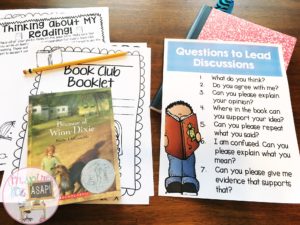
Students keep the sentence stem worksheet as a reference in their book club folders.
Explicit Teaching during Reading Workshop
Last but not least…
Students need to be explicitly taught how to hold effective and meaningful conversations, focused on the text. This does not come easily or naturally for primary aged students. One of my favorite ways to teach this is by modeling powerful discussions as part of our daily reading workshop time.
For example, one of our reading workshop mini-lessons might be about identifying the genre of Charlotte’s Web, and providing specific examples of the genre. I would first state the learning objective and then explicitly model my thinking about how I know Charlotte’s Web is a fantasy, using the text to support my thinking.
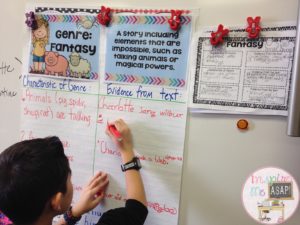
Students would then “turn and talk” to their partner, providing a different example in the text. As a class, we continue to identify different characteristics of a fantasy and the students work in partners to discuss and find evidence in the text. As the students are talking with their partner, I walk around the room and listen in to hear their conversations. I make sure the students are using correct language, using the book to find evidence. If they are having trouble, I provide them with a sentence stem, such as “Charlotte’s Web is a fantasy because…. I can find an example in the text on page…”
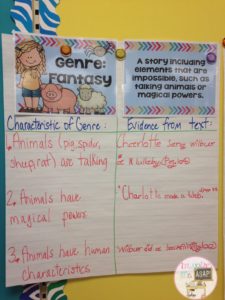
What the students do in their book club relates to our ongoing work during our novel study. In the picture below, our whole class mini-lesson was identifying the theme of Charlotte’s Web. As students meet with their book clubs, I might give a direction such as, “When you meet with your book club today, please see if you can identify the theme of your book. Be sure to use the text to find examples that support your thinking.”
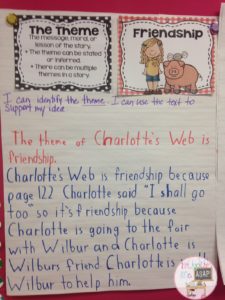
By having my students “turn and talk” with their partner, they have the opportunity practice the way that I want them to talk when they are with their book clubs. I provide them with the exact language that I want them to use when they meet with their groups.
You can learn more about my Charlotte’s Web Unit by clicking HERE.
I hope this blog post provided you with some concrete ways that you can establish student-led conversations in your book clubs. As always, if you have any questions, please feel free to email me and I am happy to try to help!
Check out the rest of the blog posts in my book club series:
Chapter One: Introduction to book clubs
Chapter Two: Benefits of book clubs
Chapter Three: Matching books to readers
Chapter Four: Book club expectations
Chapter Five: Accountability with book club members
Chapter Six: Student-led conversations in book clubs
Chapter Seven: Role of the teacher in book clubs
Chapter Eight: Using assessments in book clubs
Looking for a resource to help you implement book clubs in your classroom?
Check out my resource below!


File Description:
Looking for an engaging and sure-fire way to motivate your readers? This 107 page file has everything you need to know in order to effectively implement a book clubs with your rockin’ readers, while meeting the CCSS for Speaking and Listening.
There are 15 mini-lessons that are included in this file, which focus on establishing routines and setting expectations for book clubs with your students.
Mini-lessons include:
Detailed lesson plans
Colorful posters for you to print for your anchor charts
Reproducibles for your students
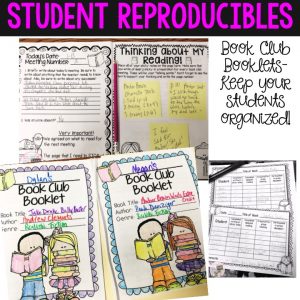
During this unit, readers will learn to:
-Define book clubs and understand its importance
-Describe characteristics of what book clubs LOOK like
-Describe characteristics of what book clubs SOUND like
-Book club members are assigned
-Commit to expected behaviors
-Shop for a book
-Follow agendas to stay on task
-Prepare for group meetings
-Read assigned portions of text and take notes about what they read
-Participate in a group discussion
-Share their opinions with group members
-Keep conversations on-task and focused
-Compromise and problem solve when issues arise
-Use prompts to guide their discussions
-Self-reflect and evaluate their performance
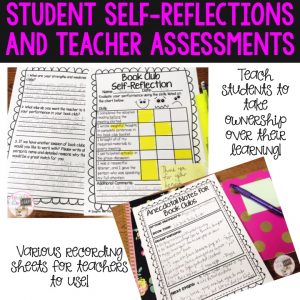
Also included in this unit:
-A note to send home to parents
-Tips for teachers about implementing book clubs successfully
-Detailed rubrics for teachers and students
-Bulletin board resources, where each group can post their group name, picture, assignment, and other important information
This Book Club Resource is also part of my Reading Workshop BUNDLE
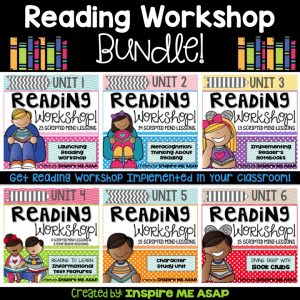
Click HERE to purchase the book club resource from Teachers Pay Teachers.
Save 10% by purchasing directly from my website.

